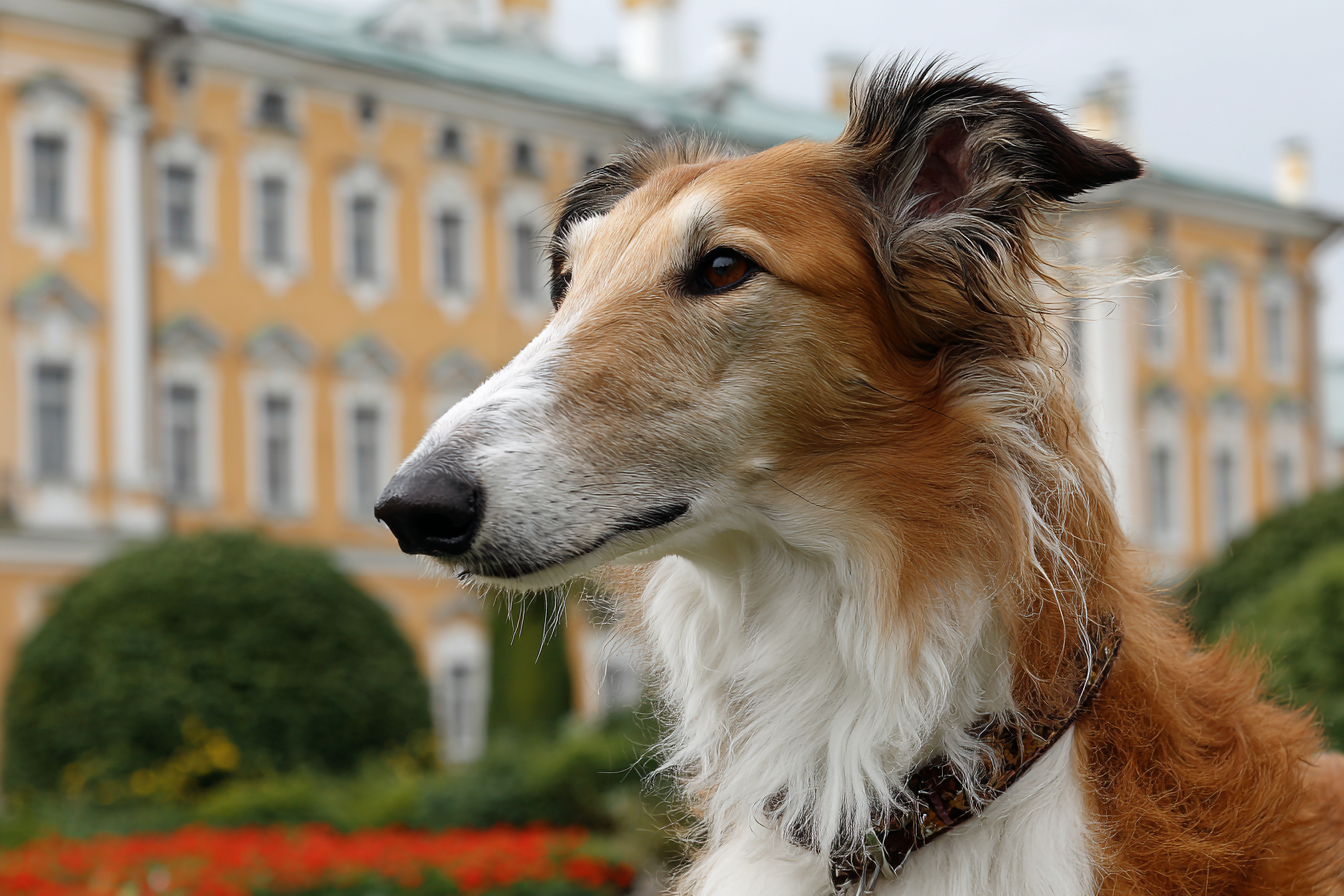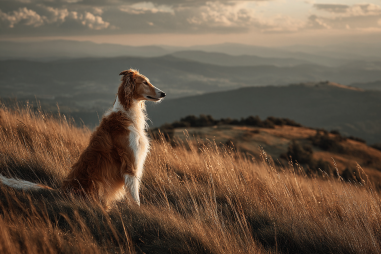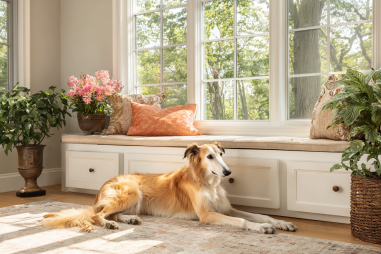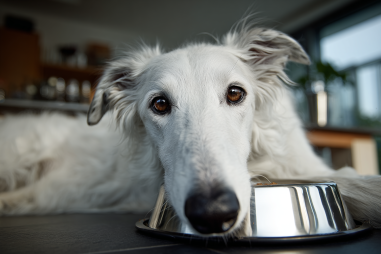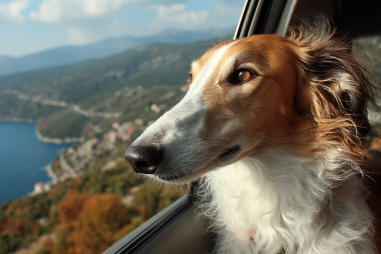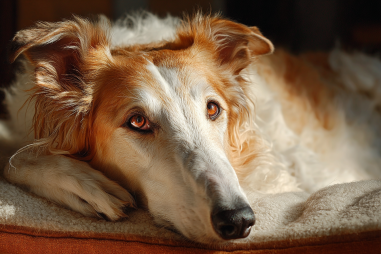The Borzoi, with its graceful silhouette and aristocratic bearing, is a dog breed steeped in history and rich traditions. Known for its elegance and speed, the Borzoi has fascinated dog lovers around the world for centuries. This breed’s story is intertwined with Russian nobility, hunting culture, and the evolution of dog breeding practices, making it one of the most intriguing sighthounds in existence. Let’s embark on a journey through time to discover the fascinating history and origin of the Borzoi dog breed.
Origins of the Borzoi Breed
The Borzoi, also known historically as the Russian Wolfhound, traces its roots back to 17th century Russia. Its name, “Borzoi,” is derived from the Russian word “borzyi,” which means “swift.” This is a fitting name, as the breed was originally bred for its incredible speed and agility, essential traits for its primary role. The Borzoi emerged from a careful crossbreeding between Arabian greyhounds and thick-coated Russian sighthounds that thrived in the fierce conditions of the Russian countryside.
These early crosses produced a dog that was perfectly adapted to withstand the harsh Russian winters while maintaining the swift and powerful hunting capabilities of a pure sighthound. The breed was primarily developed by Russian nobility and shepherds in order to pursue fast game such as hares and wolves. Their long legs, streamlined bodies, and powerful muscles made them superb hunters that could easily cover vast distances.
Role in Russian Aristocracy
The Borzoi quickly became a symbol of prestige and wealth in Russian aristocratic society. These dogs were highly prized by Tsars, noble families, and wealthy landowners who used them both as loyal companions and status symbols. Borzois were often featured prominently in Russian art, literature, and even royal portraits, showcasing their importance beyond the hunting field.
At the royal courts, Borzois were not only hunting dogs but also cherished pets. Their refined appearance—marked by a silky, flowing coat and noble stature—made them ideal for the salons and palaces of the upper class. Ownership of Borzois was closely associated with luxury; only the elite could afford to keep and maintain these delicate animals, who required meticulous grooming and care.
In fact, the Tsarist family had breeding programs to preserve the purity and excellence of the Borzoi. This official patronage helped shape the breed’s characteristics and secured its place in history as the quintessential Russian noble dog.
Historical Uses as a Sighthound
At the heart of the Borzoi’s legacy is its role as a sighthound. Unlike scent hounds, which rely on their nose to track prey, sighthounds hunt by sight and speed, chasing down game with incredible bursts of velocity. The Borzoi was primarily used for hunting wolves, which were a serious threat in the vast Russian wilderness. Their keen eyesight, agility, and perseverance made them ideal wolf hunters, capable of locating and catching prey over great distances.
Hunting with Borzois was a major aristocratic pastime. The hunts were elaborate affairs featuring riders on horseback, packs of Borzois, and sometimes falcons. These events were both sport and a demonstration of power and control over the land.
The breeds’ hunting style involved spotting the prey from afar, sprinting to catch it, and holding it at bay without immediately killing it. This was particularly useful for aristocrats who wished to keep the animals alive for their pelts or further use.
Evolution of the Breed’s Appearance
Over the centuries, the Borzoi’s appearance evolved to reflect both functional and aesthetic preferences. Initially, the dogs had a rougher coat that provided protection against the cold and underbrush during hunts. As they transitioned from outdoor hunting roles to companions of nobility, their coats became silkier and more luxurious, emphasizing elegance.
Physically, Borzois developed their signature slender bodies, long, narrow heads, and deep chests that improved lung capacity and allowed them to reach high speeds. Their long, flowing coat, which comes in a variety of colors including white, cream, gold, and various combinations, became a hallmark of the breed’s beauty. The coat not only gave them a regal appearance but also served to protect them from cold climates.
Selective breeding by noble families ensured that the Borzoi maintained its elegant gait and aristocratic demeanor. This focus on refinement eventually led to the breed’s recognition in international dog registries.
Borzoi’s Introduction to Other Countries
The Borzoi’s journey beyond Russia began in the late 19th and early 20th centuries, coinciding with increased international interest in unusual and elegant dog breeds. British and American dog enthusiasts encountered the Borzoi at European dog shows and hunting gatherings, captivated by their graceful form and storied history.
The first Borzois arrived in the United States in the 1890s, quickly gaining popularity among the dog-loving upper class. American breeders worked to establish and promote the breed through organizations like the American Kennel Club (AKC), which officially recognized the Borzoi in 1891. In the United Kingdom, the breed was recognized by The Kennel Club a few decades later.
Through these efforts, the Borzoi spread across Europe and North America, becoming beloved not only as hunting dogs but increasingly as elegant companions appreciated for their gentle and noble temperaments. Today, Borzois can be found worldwide, admired for their beauty, loyalty, and unique heritage.
Present-Day Status and Recognition
In modern times, the Borzoi is treasured primarily as a companion animal and show dog rather than a working hunter. Their gentle, calm, and somewhat independent disposition makes them wonderful pets for families who appreciate a dog with a calm demeanor and a distinguished presence. They are often described as sensitive, affectionate with their owners, and reserved with strangers.
While the Borzoi retains its athleticism and love of running, most owners accommodate this by providing regular exercise in safe, open spaces rather than using them for hunting. The breed is recognized by major kennel clubs worldwide and participates actively in dog shows.
Efforts continue among dedicated breeders to preserve the breed’s health, temperament, and distinctive appearance, keeping the Borzoi’s noble legacy alive. Their history as hunters of the Russian wilderness and companions of tsars continues to charm dog lovers around the globe.
From its noble beginnings in the Russian aristocracy to its role as a beloved companion today, the Borzoi’s history is as captivating as its elegant form. This breed’s unique blend of speed, beauty, and refinement ensures that it will remain a treasured part of the canine world for generations to come.

